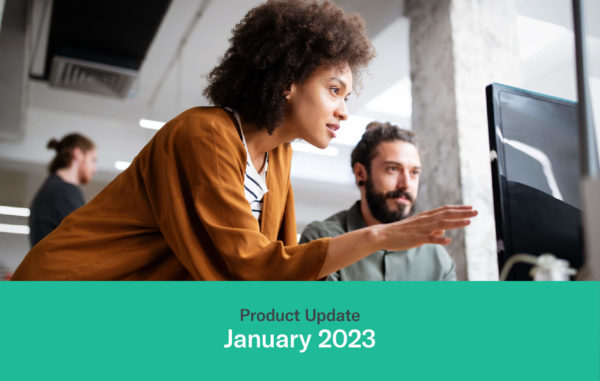Welcome to 2023! It’s been a year since we joined forces with mParticle, and during this time, our product and engineering teams have been quite busy. As this is our first product update of the year, we thought it would be helpful to start with a quick recap of what we delivered in 2022.
2022 Product Highlights
- We kicked off 2022 with the release of self-service setup for data warehouse sources, reducing the time it takes to get started with analysis and exploration. Using a self-guided workflow, data teams can easily load data into Indicative from Google BigQuery and Snowflake.
- Flexible Conversion Order is now available for Funnels. You can have greater flexibility to count events that have fired out of order to count as converted in the funnel, as is common with backend or batch data.
- We launched a new Table visualization for Conversion Over Time analysis to complement our existing Line (Smoothed), Line (Straight), and Bar visualizations.
- With EU data localization, you now have the option to store all of your data used for analysis in an EU regional data center.
- We’ve improved the integration experience between Indicative and mParticle. New features include single sign-on (shared admin users and credentials between the two platforms) and a turnkey integration setup—no more copying and pasting API keys! All mParticle customers can also now get started with a 30-day full-featured Indicative trial in minutes.
In addition to what’s listed above, we introduced many more feature enhancements and UI improvements. You can read up about them in our documentation, or in our past product update blog posts here.
Our Plans for 2023
We’ve got big aspirations for the rest of this year. Some of our focus areas for product development include:
- Adding additional visualizations and analysis features
- Achieving SOC 2 compliance
- Continuing to enhance our integration with mParticle, including the ability to sync analyzed Segments to mParticle Journeys and activate those user lists in any of mParticle’s 80+ Audience integrations
- Improving query performance with next-generation infrastructure
Speaking of additional visualizations and analysis features, we’d like to introduce an enhancement to one of our most popular analytics tools – Segmentation Analysis.
Export Event Data from Segmentation Analysis
Oftentimes, after performing a Segmentation Analysis, teams are interested in taking further action to act on their insight, such as sending an email to nudge customers towards a desired outcome. One of the ways to do that is to export the list of users from the analysis. You can do this for a single data point (or particular moment in time), or for the entire series. The resulting .csv file can be uploaded in the tool of your choice, such as your customer engagement / marketing automation platforms, to perform the desired follow-up action.
Now, aside from user data, you can also export the entire event data for a particular data point, or the entire series. For example, say you’ve built a Segmentation analysis for “How many sign-ins were there in the last 7 days?” Exporting the event data will provide you all of the sign-in events, the timestamps of each event, device / browser metadata, and any number or all of the event properties associated with each sign-in event.



